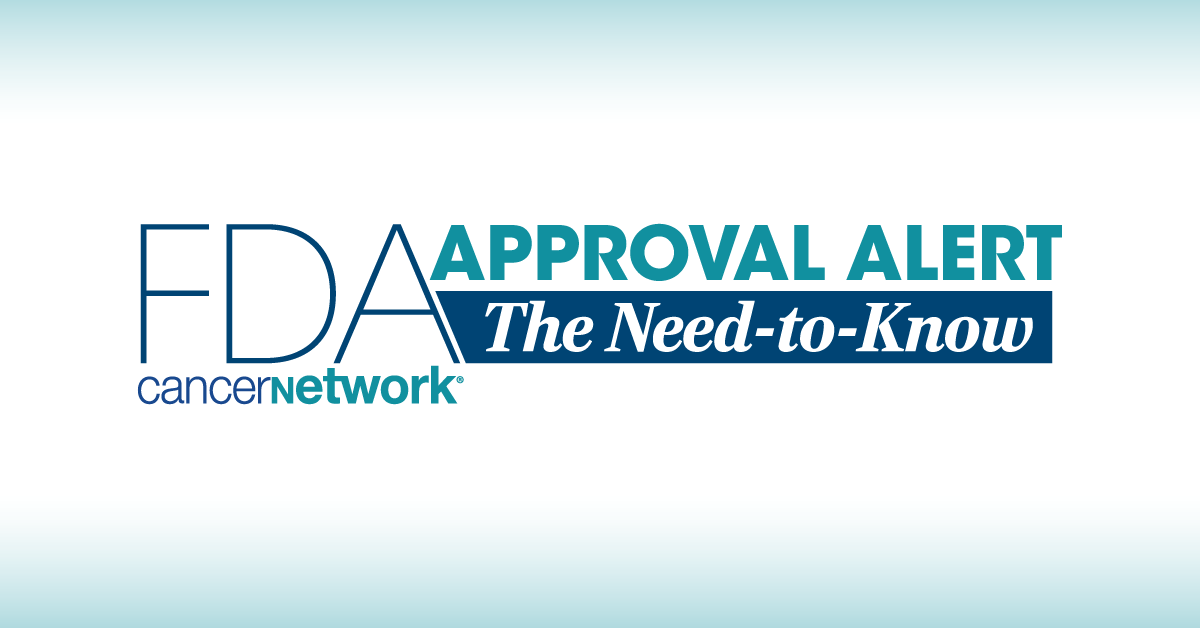FDA Approves Subcutaneous Nivolumab in All Solid Tumor Indications
Data from CheckMate-67T support the approval of subcutaneous nivolumab in patients with solid tumors across all previously approved nivolumab indications.
Data from CheckMate-67T support the approval of subcutaneous nivolumab in patients with solid tumors across all previously approved nivolumab indications.

The News
The FDA has approved subcutaneous nivolumab and hyaluronidase-nvhy (Opdivo Qvantig) as a treatment for patients in all solid tumor indications for which nivolumab has already received approval, according to a press release from the FDA.1
The indications currently are for nivolumab monotherapy, monotherapy maintenance after completions of nivolumab (Opdivo) plus ipilimumab (Yervoy), or in combination with chemotherapy or cabozantinib (Cabometyx).
The recommended dosage depends on the specific indication but can either been 600 mg of nivolumab plus 10,000 units of hyaluronidase every 2 weeks; 900 mg of nivolumab plus 15,000 units of hyaluronidase every 3 weeks; or 1200 mg of nivolumab plus 20,000 units of hyaluronidase every 4 weeks. Treatment is to continue until disease progression, unacceptable toxicity, or as indicated in the prescribing information.
Supporting Data
The approval for subcutaneous nivolumab plus hyaluronidase was supported by findings from the phase 3 CheckMate-67T trial (NCT04810078), in which investigators evaluated the efficacy of subcutaneous vs intravenous nivolumab in patients with advanced or metastatic clear cell renal cell carcinoma (RCC). Updated efficacy findings from the CheckMate-67T trial were presented at the 2024 Genitourinary Cancers Symposium.2 Additionally, updated safety findings were presented at the 2024 American Society of Clinical Oncology Annual Meeting (ASCO).3
Results presented at the 2024 Genitourinary Cancers Symposium revealed an objective response rate (ORR) by blinded independent central review (BICR) of 24.2% (95% CI, 19.0%-30.0%) with subcutaneous nivolumab vs 18.2% (95% CI, 13.6%-23.6%) with intravenous nivolumab (relative risk [RR], 1.33; 95% CI, 0.94-1.87). Additionally, comparable progression-free survival (PFS) was observed in the subcutaneous setting, with a median PFS by BICR of 7.23 months (95% CI, 5.13-7.49) vs 5.65 months (95% CI, 5.29-7.39) with intravenous nivolumab (HR, 1.06; 95% CI 0.84-1.34).
Furthermore, subcutaneous nivolumab demonstrated noninferiority for time-averaged serum concentration of nivolumab over 28 days (Cavg28) compared with intravenous nivolumab with a geometric mean ratio of 2.098 (90% CI, 2.001-2.200). Noninferiority was also attained for trough serum concentration at steady state (Cminss) with subcutaneous nivolumab, with a reported geometric mean ratio of 1.774 (90% CI, 1.633-1.927). Additionally, anti-drug antibody positivity was observed in 22.8% of patients undergoing treatment with subcutaneous nivolumab vs 7.0% of patients with intravenous nivolumab.
CheckMate-67TTrial Design
In the trial, the co-primary end points were Cavgd28 and Cminss. Secondary end points included ORR by BICR, PFS by BICR, immunogenicity, and safety. A total of 495 patients were randomly assigned 1:1 to receive either subcutaneous nivolumab (n = 248) or intravenous nivolumab (n = 247). The median age between arms was 64 and 66 years, respectively. Most patients were male (66.1% vs 69.2%), and the average injection time with subcutaneous nivolumab was fewer than 5 minutes.
Enrolled patients included those with measurable clear cell RCC whose disease progressed during or following 1 or 2 prior systemic regimens. Patients were excluded if they had undergone prior immuno-oncology treatment and needed to have a Karnofsky performance score of 70 or higher to be eligible for enrollment.
Patients in the subcutaneous arm received 1200 mg of subcutaneous nivolumab plus rHuPH20 once every 4 weeks. Alternatively, patients in the intravenous arm received 3 mg/kg of intravenous nivolumab every 2 weeks. Treatment continued until disease progression, unacceptable toxicity, withdrawal of consent, completion of 2 years’ worth of treatment, or death.
Safety Data
Results revealed that grade 3 or greater adverse events (AEs) occurred in 35.2% and 40.8% of the subcutaneous and intravenous arms, respectively, including 21.1% and 22.9% of each arm experiencing grade 3/4 serious AEs. Grade 3/4 treatment-related AEs occurred in 9.7% and 14.7% of each respective arm, 6.5% and 6.5% of which were serious.
Common any-grade AEs in the subcutaneous and intravenous arms, respectively, included arthralgia (11.7%, 15.9%), fatigue (7.7%, 15.9%), diarrhea (9.7%, 13.5%), hyperglycemia (9.3%, 13.1%), decreased appetite (8.9%, 11.4%), and back pain (7.7%, 11.0%). Additionally, there were 6 (2.4%) grade 3 or higher instances of hyperglycemia and hypokalemia in the subcutaneous arm and 5 (2.0%) grade 3 or higher instances of fatigue and hyperglycemia in the intravenous arm.
The FDA previously accepted a biologics license application for subcutaneous nivolumab in solid tumor indications for which standard intravenous nivolumab has already received approval in May 2024.4
References
- FDA approves nivolumab and hyaluronidase-nvhy for subcutaneous injection. News release. FDA. December 27, 2024. Accessed December 27, 2024. https://tinyurl.com/42rfemr7
- George S, Bourlon MT, Chacon MR, et al. Subcutaneous nivolumab (NIVO SC) vs intravenous nivolumab (NIVO IV) in patients with previously treated advanced or metastatic clear cell renal cell carcinoma (ccRCC): Pharmacokinetics (PK), efficacy, and safety results from CheckMate 67T. J Clin Oncol. 2024;42(4):LBA360. doi:10.1200/JCO.2024.42.4_suppl.LBA360
- Bourlon MT, Albiges L, Chacon MR, et al. Subcutaneous (SC) nivolumab (NIVO) vs intravenous (IV) NIVO in patients with previously treated advanced or metastatic clear cell renal cell carcinoma (ccRCC): Safety and patient-reported outcomes (PROs) of the randomized phase 3 CheckMate 67T trial. J Clin Oncol. 2024;42(suppl 16):4532. doi:10.1200/JCO.2024.42.16_suppl.4532
- U.S. Food and Drug Administration accepts Bristol Myers Squibb's application for subcutaneous nivolumab (nivolumab and hyaluronidase). News release. Bristol Myers Squibb. May 6, 2024. Accessed May 6, 2024. https://bit.ly/3JL8yY1
How Supportive Care Methods Can Improve Oncology Outcomes
Experts discussed supportive care and why it should be integrated into standard oncology care.